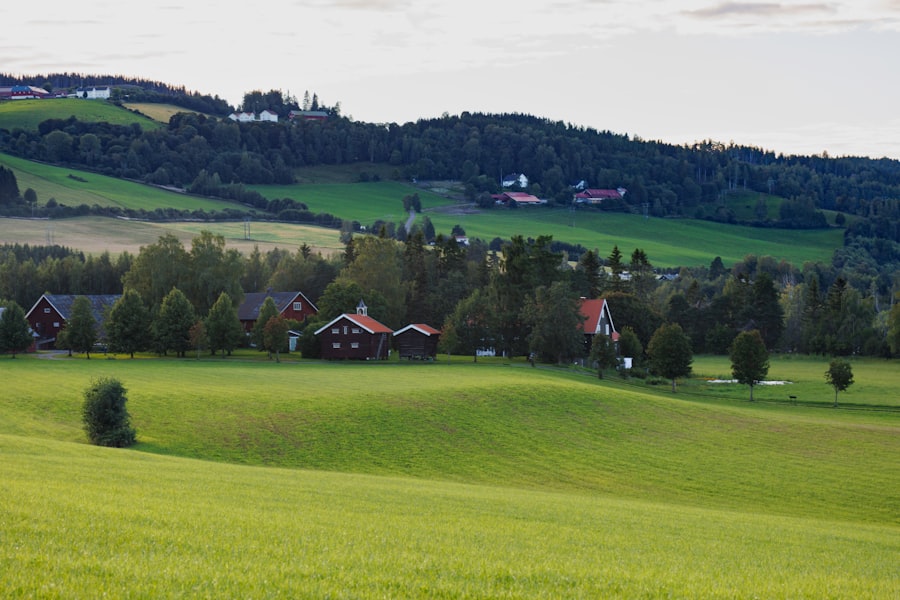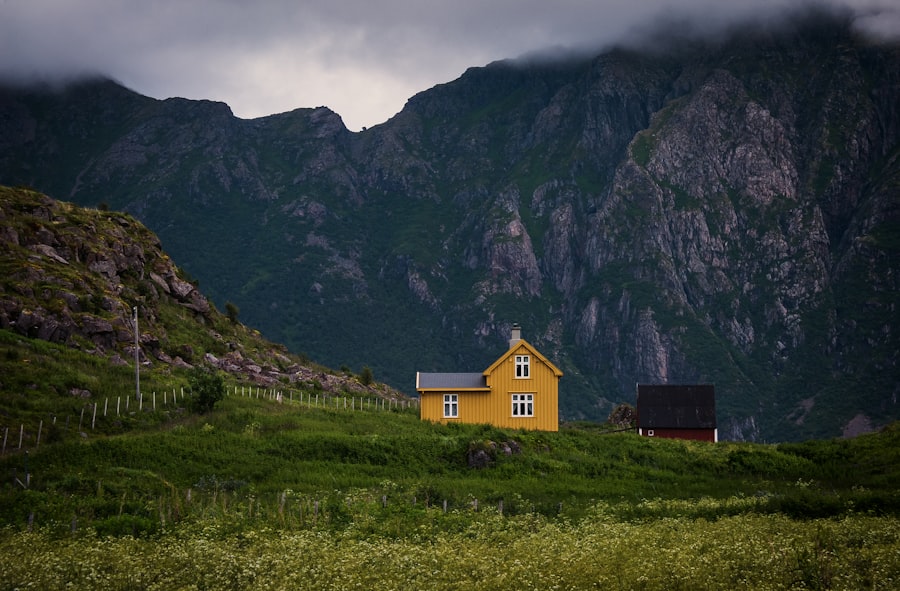Norway, known for its stunning fjords, vibrant cities, and high standard of living, has become an increasingly popular destination for expatriates and those seeking a fresh start. However, the allure of this Scandinavian gem comes with a price tag that can be daunting for newcomers. Understanding the cost of living in Norway is essential for anyone considering a move to this beautiful country.
From housing to healthcare, each aspect of daily life contributes to the overall financial landscape that one must navigate. The cost of living in Norway is often perceived as high, particularly when compared to other countries. However, it is crucial to consider the quality of life that accompanies these expenses.
Norwegians enjoy a robust welfare system, excellent public services, and a strong economy, which can offset some of the higher costs. This article will delve into various components of living expenses in Norway, providing a comprehensive overview for those contemplating a relocation or simply curious about life in this Nordic nation. Book Your 1-Hour Relocation Strategy Session
Summary
- The cost of living in Norway is generally high, with housing, food, and transportation being the major expenses.
- Housing costs in Norway can be particularly high, especially in major cities like Oslo and Bergen.
- Food and grocery expenses in Norway are also relatively expensive compared to other European countries.
- Transportation costs in Norway, including public transport and car ownership, can add up quickly.
- Healthcare and insurance expenses in Norway are covered by the national healthcare system, but private insurance may be necessary for certain services.
Housing Costs in Norway
Housing costs in Norway can vary significantly depending on the location and type of accommodation. In major cities like Oslo and Bergen, rental prices tend to be steep, with one-bedroom apartments in the city centre often exceeding 12,000 NOK per month. However, moving slightly outside the city centre can yield more affordable options, with prices dropping considerably.
For those looking to purchase property, the market can be competitive, particularly in urban areas where demand is high. In contrast, smaller towns and rural areas offer more reasonable housing options. While the trade-off may be a quieter lifestyle, many find that the lower cost of living in these regions compensates for the lack of urban amenities.
It is also worth noting that housing in Norway is typically well-maintained and energy-efficient, which can lead to lower utility costs in the long run. Overall, understanding the housing market and exploring various locations can help newcomers find suitable accommodation that fits their budget.
Food and Grocery Expenses in Norway

Food and grocery expenses in Norway are another significant aspect of the cost of living that newcomers must consider. The price of groceries can be quite high compared to other countries, with basic items such as bread, milk, and meat costing more than what many might be accustomed to. For instance, a loaf of bread can set you back around 30 NOK, while a litre of milk may cost approximately 20 NOK.
These prices can add up quickly, making it essential for residents to budget accordingly. Dining out in Norway can also be an expensive affair. A meal at a mid-range restaurant may cost around 300 NOK per person, while a simple takeaway can still run upwards of 150 NOK.
However, many Norwegians opt for home-cooked meals as a way to save money and enjoy quality time with family and friends. By shopping at local markets and taking advantage of seasonal produce, residents can mitigate some of the high costs associated with food and groceries.
Transportation Costs in Norway
Transportation costs in Norway are influenced by the country’s extensive public transport system and the geographical challenges posed by its rugged terrain. In urban areas like Oslo, public transport is efficient and widely used, with options including buses, trams, and trains. A monthly public transport pass typically costs around 800 NOK, making it a cost-effective choice for daily commuters.
For those who prefer to drive, fuel prices in Norway are among the highest in Europe, often exceeding 20 NOK per litre. Additionally, car ownership comes with expenses such as insurance, maintenance, and tolls on many roads and bridges. However, Norway’s commitment to sustainability has led to incentives for electric vehicle owners, including reduced toll fees and access to charging stations throughout the country.
Ultimately, whether one chooses public transport or personal vehicles will significantly impact their overall transportation costs.
Healthcare and Insurance Expenses in Norway
Norway boasts a comprehensive healthcare system funded by taxes, ensuring that residents have access to high-quality medical care without exorbitant out-of-pocket expenses. While healthcare services are generally free at the point of use for residents, there are some costs associated with specific treatments or medications. For instance, patients may need to pay a nominal fee for consultations or specialist visits.
It is important for newcomers to understand how the healthcare system operates and what insurance coverage they may require. While public healthcare is robust, some individuals opt for private health insurance to cover additional services or reduce waiting times for certain procedures. Overall, while healthcare costs may seem daunting at first glance, the benefits of living in a country with such a well-established system often outweigh the financial concerns.
Education and Childcare Costs in Norway

Education in Norway is primarily free for residents, including primary and secondary schooling. The country places a strong emphasis on providing quality education to all children, which is reflected in its well-funded public school system. However, parents should be aware that there may be additional costs associated with school supplies, extracurricular activities, and field trips.
For families with younger children, childcare can be a significant expense. While public daycare services are available and subsidised by the government, fees can still be substantial depending on income levels and the type of care required. Many parents find that investing in quality childcare is essential for their children’s development and socialisation.
Overall, understanding the education system and available options will help families budget effectively for their children’s needs.
Utilities and Communication Expenses in Norway
Utilities in Norway typically include electricity, heating, water, and waste disposal services. The cost of these services can vary based on usage and location but generally averages around 1,500 NOK per month for a standard household. It is worth noting that many homes are equipped with energy-efficient appliances and insulation, which can help reduce overall utility costs.
Communication expenses also play a role in the cost of living in Norway. Mobile phone plans and internet services are widely available but can be relatively expensive compared to other countries. A basic mobile plan may start at around 300 NOK per month, while internet services can range from 500 to 1,000 NOK depending on speed and provider.
By shopping around for competitive rates and bundling services where possible, residents can manage these costs more effectively.
Entertainment and Leisure Costs in Norway
Norwegians value their leisure time and often engage in various activities that contribute to their overall well-being. However, entertainment costs can add up quickly in this country known for its outdoor pursuits and cultural events. A cinema ticket typically costs around 120 NOK, while entry fees for museums or galleries may range from 100 to 200 NOK.
Outdoor activities such as skiing or hiking are popular pastimes but may require investment in equipment or passes for ski resorts. Fortunately, many natural attractions are free to access, allowing residents to enjoy Norway’s breathtaking landscapes without breaking the bank. By taking advantage of free community events or exploring nature trails, individuals can enjoy leisure activities while keeping costs manageable.
Taxes and Social Security Contributions in Norway
Taxes play a significant role in funding Norway’s extensive welfare system and public services. The tax rate varies based on income levels but generally ranges from 22% to 47%. While this may seem high compared to other countries, it is essential to recognise that these taxes contribute to free healthcare, education, and social security benefits that enhance overall quality of life.
Social security contributions are also deducted from salaries to support various welfare programmes such as pensions and unemployment benefits. Understanding the tax system is crucial for newcomers as it directly impacts disposable income and budgeting strategies. Despite the higher tax burden, many residents appreciate the benefits that come with it and view it as an investment in their community’s well-being.
Comparing the Cost of Living in Norway to Other Countries
When comparing the cost of living in Norway to other countries, it becomes evident that while expenses may be higher in certain areas, they are often balanced by superior public services and quality of life. For instance, cities like Oslo may have higher housing costs than cities like Berlin or London; however, they also offer better healthcare access and lower crime rates. Moreover, when considering purchasing power parity (PPP), many expatriates find that their salaries in Norway allow them to maintain a comfortable lifestyle despite higher living costs.
It is essential for individuals contemplating a move to weigh these factors carefully against their personal circumstances and expectations.
Tips for Managing and Budgeting for the Cost of Living in Norway
Managing finances effectively is crucial for anyone living in Norway due to its relatively high cost of living. One effective strategy is creating a detailed budget that accounts for all monthly expenses such as housing, food, transportation, utilities, and entertainment. This will provide clarity on spending habits and help identify areas where savings can be made.
Additionally, taking advantage of local discounts or loyalty programmes can significantly reduce costs over time. Many supermarkets offer loyalty cards that provide discounts on groceries or special promotions throughout the year. Furthermore, exploring local markets for fresh produce can yield better prices than larger chain stores.
For those feeling overwhelmed by the financial aspects of relocating or living in Norway, consider scheduling a One-Hour Strategy Session with the Norway Relocation Group. This session offers personalised guidance tailored to your unique situation and needs. Their expertise can help you navigate the complexities of budgeting for life in Norway while ensuring you make informed decisions about your relocation journey.
With their support, you can gain valuable insights into managing your finances effectively while enjoying all that this beautiful country has to offer.

